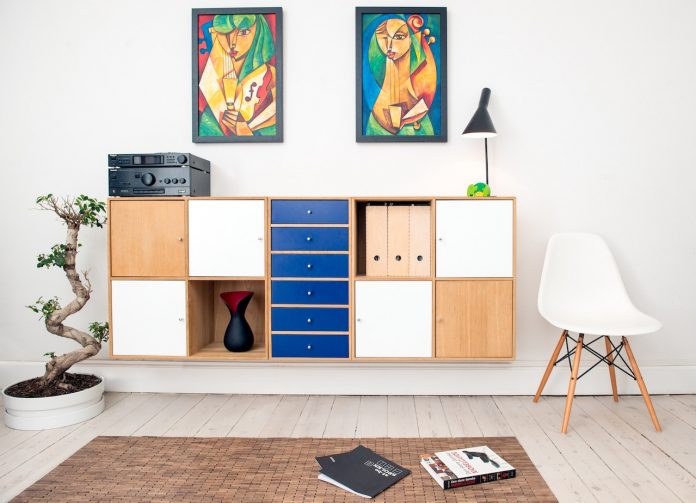MDF Cut to Size and What You Should Know Before You Start Cutting MDF
MDF is an excellent material for furniture, cabinets, and other woodworking projects. It is available in different thicknesses and sizes and can be cut to fit your needs. But there are a few things you should know before you start cutting MDF. So read on for best practices to help you get the most out of this versatile material!
What is MDF?
MDF, or medium-density fiberboard, is an engineered wood product made by breaking down hardwood or softwood into small fibers and then bonding them with heat and pressure. MDF is a versatile material used for various woodworking projects, including furniture, cabinets, moldings, and more.
The Benefits of MDF
MDF has many advantages over other types of wood products. For example, it is:
- Smooth and Consistent Surface: One of the benefits of MDF is that it has a smooth and consistent surface. This makes it ideal for painting or staining.
- Strong and Durable: MDF is also a strong and durable material, making it ideal for furniture and cabinets.
- Easy to Cut and Shape: MDF is easy to cut and shape using standard woodworking tools.
- Less Likely to Warp or Chip: MDF is less likely to warp or chip than other types of wood, making it a good choice for projects that require precision.
- Can Be Milled and Shaped into a Variety of Profiles: MDF can be milled and shaped into various profiles, giving woodworkers great flexibility when designing projects.

The Best Ways to Cut MDF to Get the Most Out of Appearance and Strength
MDF is available in various thicknesses and sizes, making it easy to find suitable material for your project. However, before you start cutting MDF, there are a few things you should keep in mind to get the most out of this versatile material.
Use a Saw With a Dust Collector Attachment
When cutting MDF, it is essential to use a saw with a dust collector attachment. This will help minimize the dust created, harming your health if inhaled. In addition, a dust collector will also help keep your work area clean and free of debris.
Use a Good Quality MDF
When working with MDF, it is vital to use good-quality material. Cheap MDF can be made from lower-quality wood fibers, leading to warping and chipping. In addition, lower-quality MDF may not be as strong or durable as higher-quality materials.
To ensure that you use a high-quality MDF, look for material certified by the CARB (California Air Resources Board). The CARB certification means that the MDF has been tested for formaldehyde emissions and meets strict standards for indoor air quality.
Avoid Cutting on Dirty Surfaces
Another important tip for working with MDF is to avoid cutting on dirty surfaces. When cutting MDF, any dirt or debris on the material’s surface can be transferred to your saw’s blade, potentially causing damage.
To avoid this problem, make sure that your work area is clean and free of debris before you start cutting. In addition, it is also a good idea to wear gloves when working with MDF to keep your hands clean and prevent the transfer of dirt and debris.
Use Sharp Blades
Another important tip for cutting MDF is to use sharp blades. Dull blades can cause the material to chip or splinter, so it is vital to ensure that your blades are sharp before cutting. You should also change your blades frequently to ensure they stay sharp and prevent damage to the MDF.
In addition, it is a good idea to use a blade with a lower tooth count when cutting MDF. A blade with fewer teeth will create a smoother cut and help prevent chipping.
Make Sure the Room is Well-Ventilated
When working with MDF, it is vital to ensure that the room is well-ventilated. The fumes from cutting MDF can harm your health, so it is essential to work in a well-ventilated area or wear a respirator. Additionally, it is a good idea to open windows and doors to help circulate air and ventilate the room.
Use a Jig or Template
When cutting MDF, it is essential to use a jig or template to ensure accuracy. A jig will help you make straight cuts, while you can use a template for more intricate cuts. In addition, using a jig or template will help you avoid mistakes and wasted material.
In addition, it is a good idea to use clamps to secure the MDF in place while you are cutting. This will help prevent the material from moving and ensure that your cuts are straight.
Take Your Time
When cutting MDF, it is crucial to take your time and ensure that each cut is accurate. Rushing through the cutting process can lead to mistakes and wasted material. Additionally, it is essential to ensure that you are using the right blade for the job.
These are just a few tips for getting the most out of your MDF cuts. Following these tips or ordering your project to a reliable MDF cut to size company in London, you can create precise cuts to help you complete your project quickly and easily.
Other Things to Consider When Using MDF in a Woodworking Project
In addition to following the tips above, there are a few other things to keep in mind when using MDF in a woodworking project.
- First, it is essential to use the proper saw blade for cutting MDF. A thin-kerf blade will help prevent chipping and splintering, while a thicker blade will be better for making clean, straight cuts.
- Second, using the correct type of glue when working with MDF is essential. You should use Weldbond or a different kind of wood glue for most applications. However, if you are working on a project exposed to moisture, it is vital to use a waterproof adhesive.
- Finally, it is essential to seal the MDF after cutting it. This will help prevent moisture damage and give the material an excellent finish. A clear coat of polyurethane or another sealer will work well for most applications.
Conclusion
MDF is a versatile and helpful material for woodworking that comes in various thicknesses and sizes. You can cut it to whatever dimensions you need, but there are some things to keep in mind before getting started. If you follow the tips we listed, you’ll be able to make the most of when cutting MDF!






